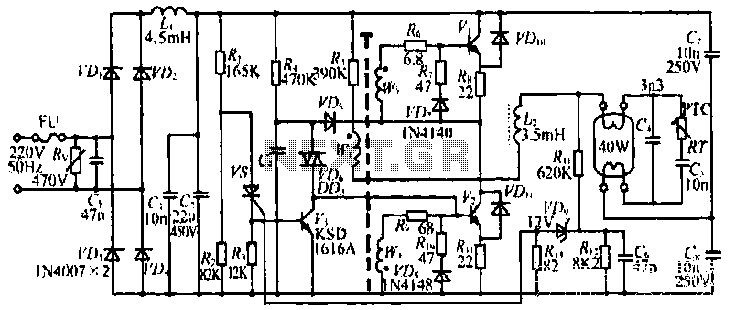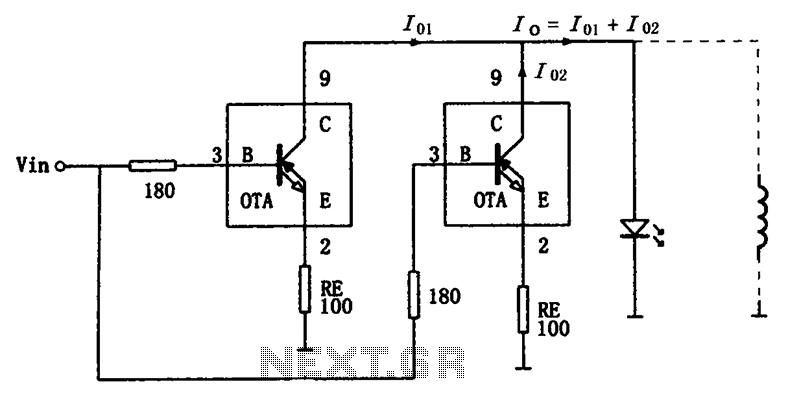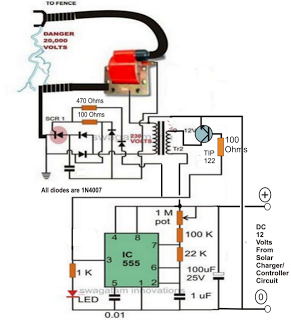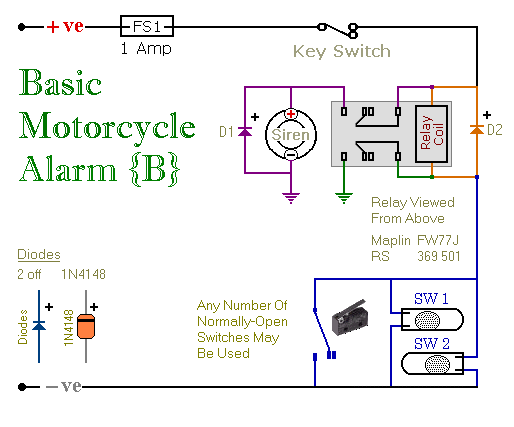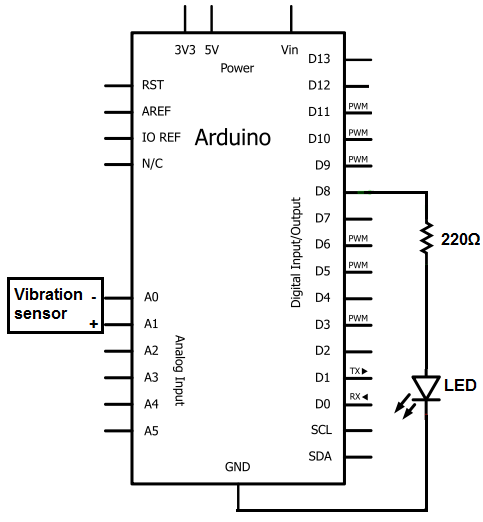
Af Drive Indicator Circuit
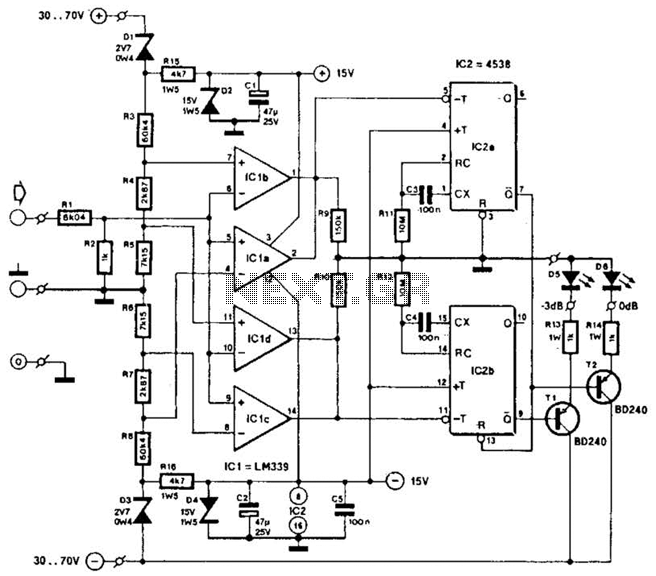
This circuit was utilized with an audio power amplifier to identify the point at which the output is -3 dB from maximum, indicated by LED D5, and at clipping, shown by LED D6. The indicator can be employed with any amplifier operating from a 30 to 70 V symmetrical supply.
The circuit functions as a signal level indicator for audio power amplifiers, providing visual feedback on the amplifier's output performance. The primary components involved include two LEDs (D5 and D6) that serve as indicators for specific output conditions.
LED D5 lights up when the output level reaches -3 dB, which is a critical threshold indicating that the amplifier is nearing its maximum output capacity. This is essential for preventing distortion and maintaining audio quality, as exceeding this level can lead to clipping.
LED D6, on the other hand, activates when the output signal reaches the clipping point, signaling that the amplifier is unable to produce a higher output without distortion. Clipping occurs when the output signal is driven beyond the power supply limits, and continual operation in this region can damage the amplifier and connected speakers.
The circuit is designed to operate within a voltage range of 30 to 70 V, making it compatible with various audio amplifiers that utilize a symmetrical power supply configuration. This adaptability allows it to be integrated into different audio systems without requiring significant modifications.
To implement this circuit, a voltage divider or a similar method can be used to derive a portion of the amplifier's output voltage, which is then fed into a comparator or a similar circuit that determines when the output reaches the specified thresholds. The outputs of this circuit drive the LEDs, providing a clear and immediate visual indication of the amplifier's operating condition.
This design is beneficial for audio engineers and technicians who require real-time monitoring of amplifier performance, ensuring optimal operation and preventing potential damage to audio equipment. This circuit was used with an audio power amplifier to detect the point at which output is -3 dB from maximum, indicated by LED D5, and at clipping, shown by LED D6. The indicator can be used with any amplifier operating from a 30 to 70 V symmetrical supply.
The circuit functions as a signal level indicator for audio power amplifiers, providing visual feedback on the amplifier's output performance. The primary components involved include two LEDs (D5 and D6) that serve as indicators for specific output conditions.
LED D5 lights up when the output level reaches -3 dB, which is a critical threshold indicating that the amplifier is nearing its maximum output capacity. This is essential for preventing distortion and maintaining audio quality, as exceeding this level can lead to clipping.
LED D6, on the other hand, activates when the output signal reaches the clipping point, signaling that the amplifier is unable to produce a higher output without distortion. Clipping occurs when the output signal is driven beyond the power supply limits, and continual operation in this region can damage the amplifier and connected speakers.
The circuit is designed to operate within a voltage range of 30 to 70 V, making it compatible with various audio amplifiers that utilize a symmetrical power supply configuration. This adaptability allows it to be integrated into different audio systems without requiring significant modifications.
To implement this circuit, a voltage divider or a similar method can be used to derive a portion of the amplifier's output voltage, which is then fed into a comparator or a similar circuit that determines when the output reaches the specified thresholds. The outputs of this circuit drive the LEDs, providing a clear and immediate visual indication of the amplifier's operating condition.
This design is beneficial for audio engineers and technicians who require real-time monitoring of amplifier performance, ensuring optimal operation and preventing potential damage to audio equipment. This circuit was used with an audio power amplifier to detect the point at which output is -3 dB from maximum, indicated by LED D5, and at clipping, shown by LED D6. The indicator can be used with any amplifier operating from a 30 to 70 V symmetrical supply.
